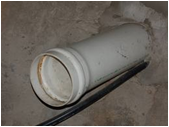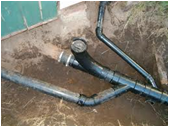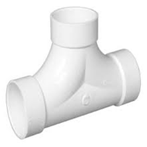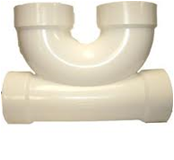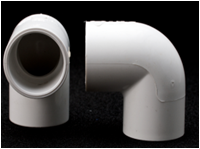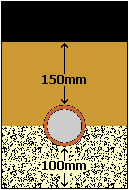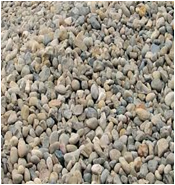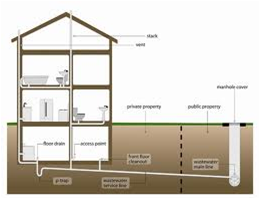Difference between revisions of "Practitioner's Tool / Sewers for Buildings"
(→Vents) |
|||
| (7 intermediate revisions by the same user not shown) | |||
| Line 7: | Line 7: | ||
| [[File:Pipe1.png|thumb|right|200px|PVC-pipe]] | | [[File:Pipe1.png|thumb|right|200px|PVC-pipe]] | ||
| − | | [[File:Pipe2.png|thumb| | + | | [[File:Pipe2.png|thumb|right|200px|ABS-pipe]] |
|- | |- | ||
| | | | ||
| Line 19: | Line 19: | ||
| [[File:Cleanout1.png|right|200px]] | | [[File:Cleanout1.png|right|200px]] | ||
| − | | [[File:Cleanout2.png| | + | | [[File:Cleanout2.png|right|200px]] |
|- | |- | ||
| | | | ||
| Line 31: | Line 31: | ||
| [[File:Sweep1.png|thumb|right|200px|correct]] | | [[File:Sweep1.png|thumb|right|200px|correct]] | ||
| − | | [[File:Sweep2.png|thumb| | + | | [[File:Sweep2.png|thumb|right|200px|incorrect]] |
|- | |- | ||
| | | | ||
| Line 42: | Line 42: | ||
Always use bedding materials to help protect the sewer pipe from damage due to sharp objects. The bedding material is laid down and raked to the desired slope, making it easier to install the pipe and providing long-term insurance against settling and breakage. | Always use bedding materials to help protect the sewer pipe from damage due to sharp objects. The bedding material is laid down and raked to the desired slope, making it easier to install the pipe and providing long-term insurance against settling and breakage. | ||
| − | | [[File: | + | |[[File:Bedding2.png|right|150px]] |
| − | | [[File: | + | |[[File:Bedding1.png|right|200px]] |
|- | |- | ||
| | | | ||
| Line 49: | Line 49: | ||
| | | | ||
|- | |- | ||
| − | | | + | | |
| + | |||
=== Vents === | === Vents === | ||
In the typical building sewer layout shown to the left--notice that the sewer line is connected to a vent stack that protrudes from the roof. This provides positive ventilation that transports sewer gasses to the roof level, instead of the street level where they may cause odors or nuisances. | In the typical building sewer layout shown to the left--notice that the sewer line is connected to a vent stack that protrudes from the roof. This provides positive ventilation that transports sewer gasses to the roof level, instead of the street level where they may cause odors or nuisances. | ||
| − | | | + | | |
| | | | ||
| + | [[File:Vents1.png|right|200px]] | ||
|} | |} | ||
| − | |||
| − | ''[[Practitioner's Tool / | + | ''[[Practitioner's Tool / Sewers Comparison|Back to Sewers Comparison]]'' |
Latest revision as of 22:40, 22 November 2016
Sewer PipesTwo types of plastic sewer pipe are common for building sewers: polyvinyl chloride (PVC) and acrylonitrile butadiene styrene (ABS).PVC plastic uses slip-style ring fittings, and ABS plastic uses glue fittings. Talk with your local supplier to see which is most cost effective and readily available in your area. |
||
CleanoutsThe two styles of cleanouts shown to the left allow for snaking the pipe in both directions. Install one cleanout within 2 meters of the building and additional cleanouts every 15 meters of sewer run or anywhere the sewer pipe changes direction by 30 degrees or more. |
||
Sanitary SweepsAlways use sanitary sweep fittings when making bends in sewer lines as abrupt changes in direction can cause clogs and maintenance issues in the sewer line. Always install a 2-way cleanout directly upstream of the direction change. |
||
Bedding and Cover MaterialAlways use bedding materials to help protect the sewer pipe from damage due to sharp objects. The bedding material is laid down and raked to the desired slope, making it easier to install the pipe and providing long-term insurance against settling and breakage. |
||
VentsIn the typical building sewer layout shown to the left--notice that the sewer line is connected to a vent stack that protrudes from the roof. This provides positive ventilation that transports sewer gasses to the roof level, instead of the street level where they may cause odors or nuisances. |
